Keshav Singh
CmWave and Sub-THz: Key Radio Enablers and Complementary Spectrum for 6G
Jun 26, 2024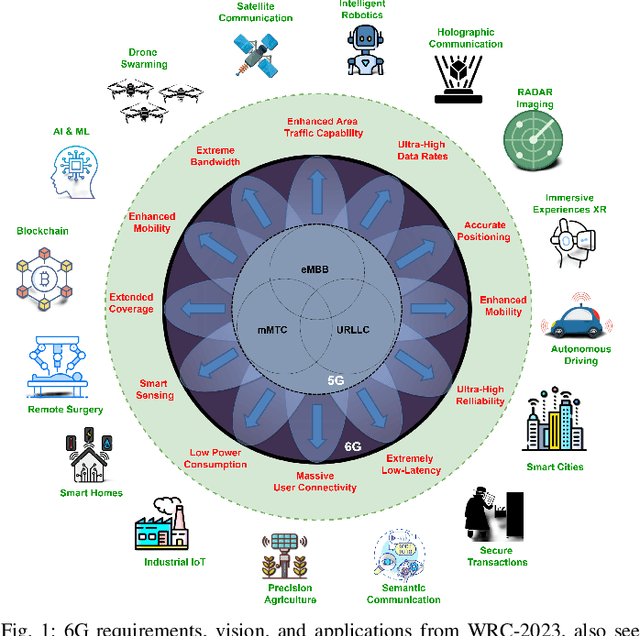

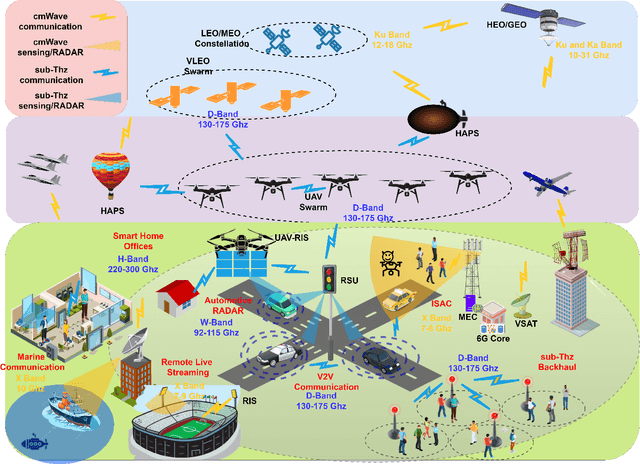
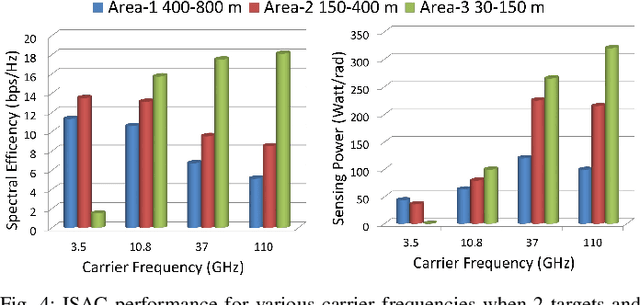
Abstract:Sixth-generation (6G) networks are poised to revolutionize communication by exploring alternative spectrum options, aiming to capitalize on strengths while mitigating limitations in current fifth-generation (5G) spectrum. This paper explores the potential opportunities and emerging trends for cmWave and sub-THz spectra as key radio enablers. This paper poses and answers three key questions regarding motivation of additional spectrum to explore the strategic implementation and benefits of cmWave and sub-THz spectra. Also, we show using case studies how these complementary spectrum bands will enable new applications in 6G, such as integrated sensing and communication (ISAC), re-configurable intelligent surfaces (RIS) and non-terrestrial networks (NTN). Numerical simulations reveal that the ISAC performance of cmWave and sub-THz spectra outperforms that of existing 5G spectrum, including sub-6 GHz and mmWave. Additionally, we illustrate the effective interplay between RIS and NTN to counteract the effects of high attenuation at sub-THz frequencies. Finally, ongoing standardization endeavors, challenges and promising directions are elucidated for these complementary spectrum bands.
An Overview of Intelligent Meta-surfaces for 6G and Beyond: Opportunities, Trends, and Challenges
May 06, 2024Abstract:With the impending arrival of the sixth generation (6G) of wireless communication technology, the telecommunications landscape is poised for another revolutionary transformation. At the forefront of this evolution are intelligent meta-surfaces (IS), emerging as a disruptive physical layer technology with the potential to redefine the capabilities and performance metrics of future wireless networks. As 6G evolves from concept to reality, industry stakeholders, standards organizations, and regulatory bodies are collaborating to define the specifications, protocols, and interoperability standards governing IS deployment. Against this background, this article delves into the ongoing standardization efforts, emerging trends, potential opportunities, and prevailing challenges surrounding the integration of IS into the framework of 6G and beyond networks. Specifically, it provides a tutorial-style overview of recent advancements in IS and explores their potential applications within future networks beyond 6G. Additionally, the article identifies key challenges in the design and implementation of various types of intelligent surfaces, along with considerations for their practical standardization. Finally, it highlights potential future prospects in this evolving field.
LPAttack: A Feasible Annotation Scheme for Capturing Logic Pattern of Attacks in Arguments
Apr 04, 2022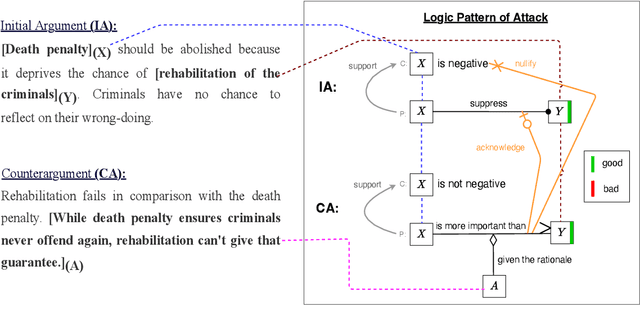
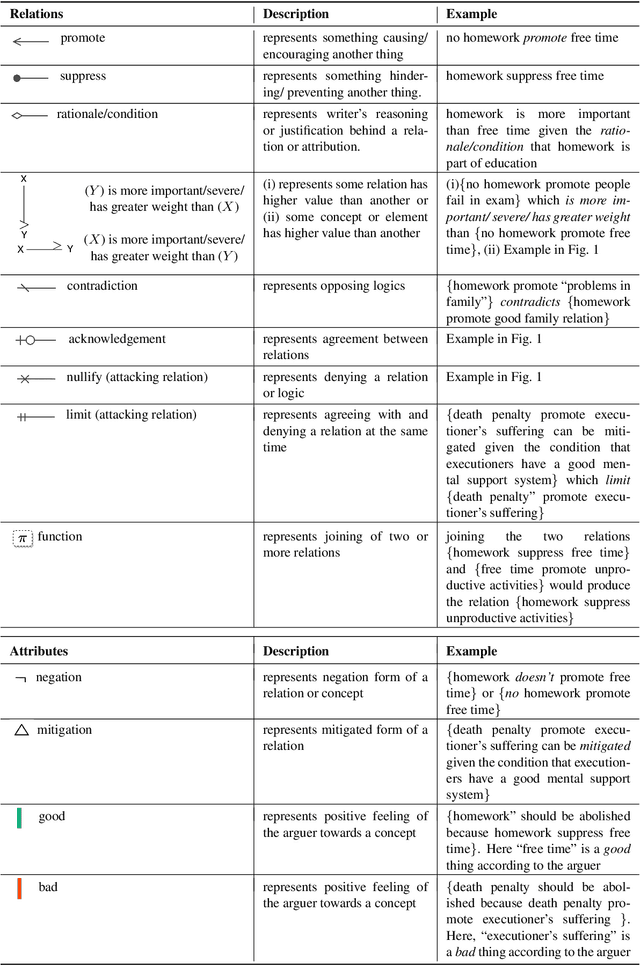
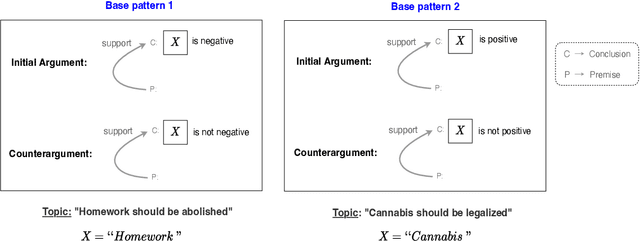
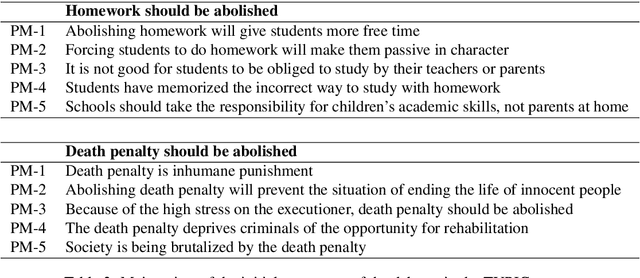
Abstract:In argumentative discourse, persuasion is often achieved by refuting or attacking others arguments. Attacking is not always straightforward and often comprise complex rhetorical moves such that arguers might agree with a logic of an argument while attacking another logic. Moreover, arguer might neither deny nor agree with any logics of an argument, instead ignore them and attack the main stance of the argument by providing new logics and presupposing that the new logics have more value or importance than the logics present in the attacked argument. However, no existing studies in the computational argumentation capture such complex rhetorical moves in attacks or the presuppositions or value judgements in them. In order to address this gap, we introduce LPAttack, a novel annotation scheme that captures the common modes and complex rhetorical moves in attacks along with the implicit presuppositions and value judgements in them. Our annotation study shows moderate inter-annotator agreement, indicating that human annotation for the proposed scheme is feasible. We publicly release our annotated corpus and the annotation guidelines.
TYPIC: A Corpus of Template-Based Diagnostic Comments on Argumentation
Jan 18, 2022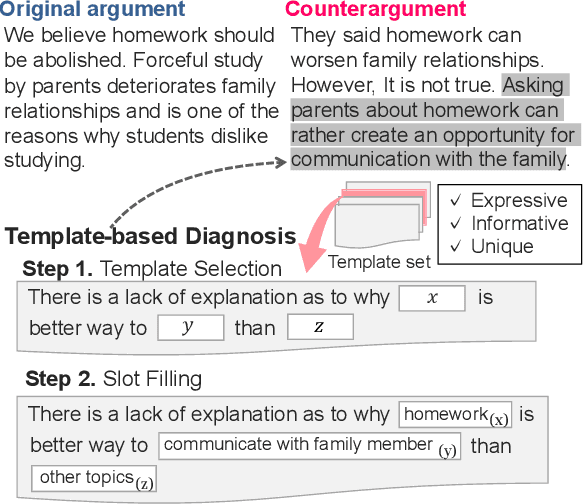
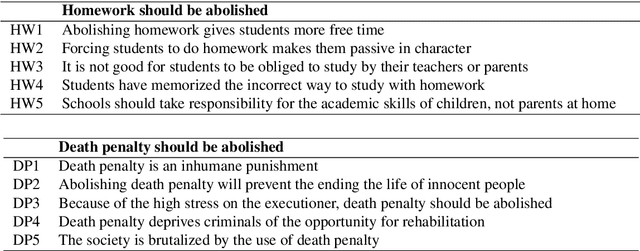
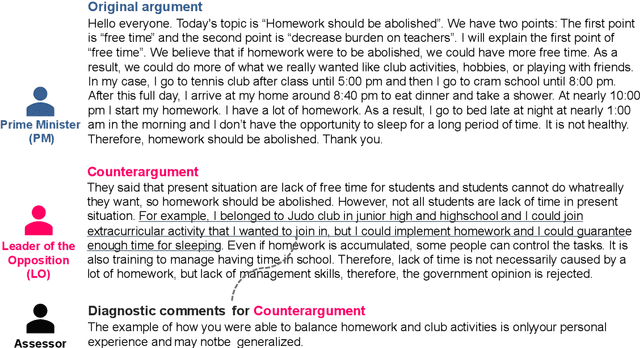
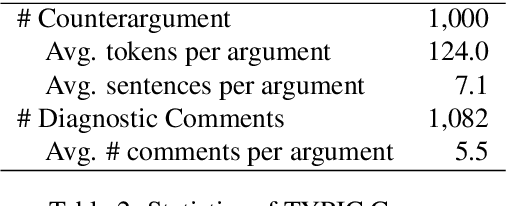
Abstract:Providing feedback on the argumentation of learner is essential for development of critical thinking skills, but it takes a lot of time and effort. To reduce the burden on teachers, we aim to automate a process of giving feedback, especially giving diagnostic comments which point out the weaknesses inherent in the argumentation. It is advisable to give specific diagnostic comments so that learners can recognize the diagnosis without misunderstanding. However, it is not obvious how the task of providing specific diagnostic comments should be formulated. We present a formulation of the task as template selection and slot filling to make an automatic evaluation easier and the behavior of the model more tractable. The key to the formulation is the possibility of creating a template set that is sufficient for practical use. In this paper, we define three criteria that a template set should satisfy: expressiveness, informativeness, and uniqueness, and verify the feasibility to create a template set that satisfies these criteria as a first trial. We will show that it is feasible through an annotation study that converts diagnostic comments given in text into a template format. The corpus used in the annotation study is publicly available.
Annotating Implicit Reasoning in Arguments with Causal Links
Oct 26, 2021
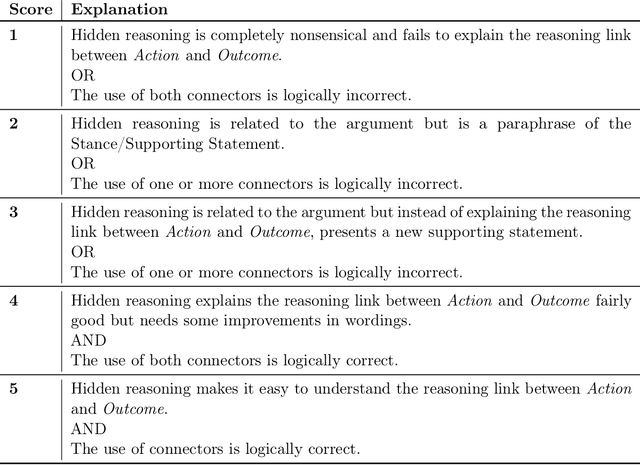
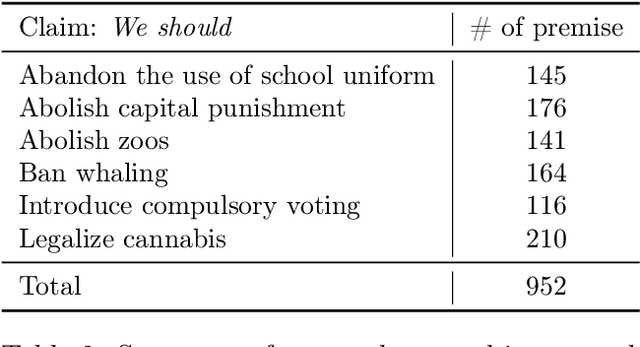
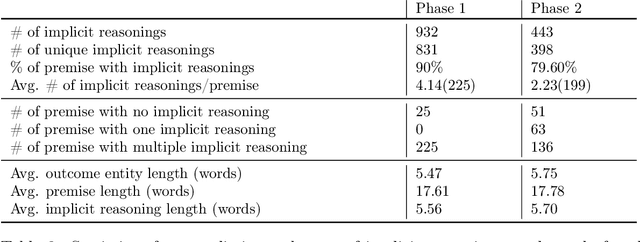
Abstract:Most of the existing work that focus on the identification of implicit knowledge in arguments generally represent implicit knowledge in the form of commonsense or factual knowledge. However, such knowledge is not sufficient to understand the implicit reasoning link between individual argumentative components (i.e., claim and premise). In this work, we focus on identifying the implicit knowledge in the form of argumentation knowledge which can help in understanding the reasoning link in arguments. Being inspired by the Argument from Consequences scheme, we propose a semi-structured template to represent such argumentation knowledge that explicates the implicit reasoning in arguments via causality. We create a novel two-phase annotation process with simplified guidelines and show how to collect and filter high-quality implicit reasonings via crowdsourcing. We find substantial inter-annotator agreement for quality evaluation between experts, but find evidence that casts a few questions on the feasibility of collecting high-quality semi-structured implicit reasoning through our crowdsourcing process. We release our materials(i.e., crowdsourcing guidelines and collected implicit reasonings) to facilitate further research towards the structured representation of argumentation knowledge.
An Analysis on Rate-Splitting Multiple Access for IRS Aided 6G Communication
Jun 05, 2021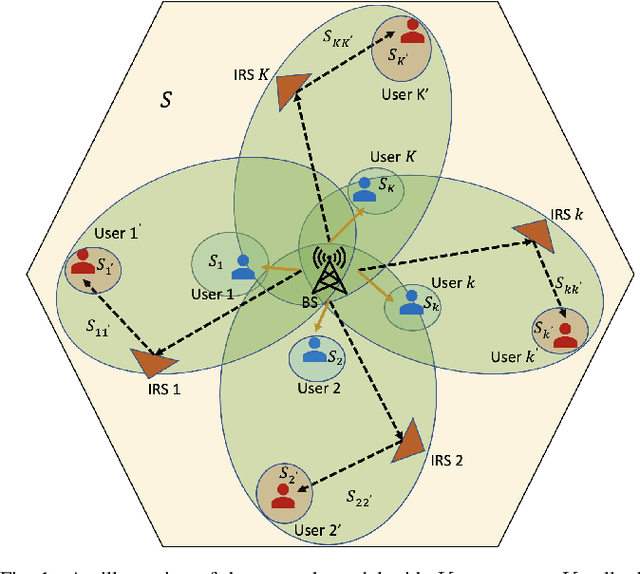
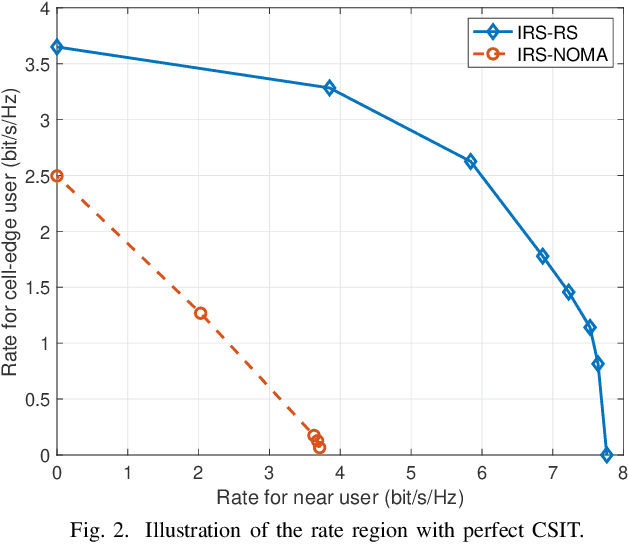
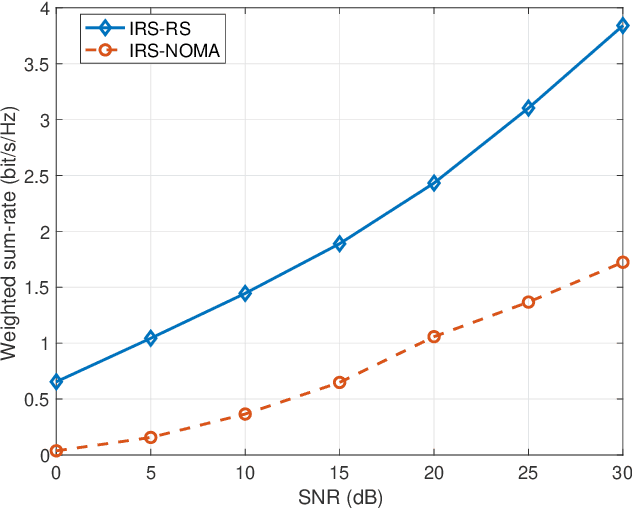
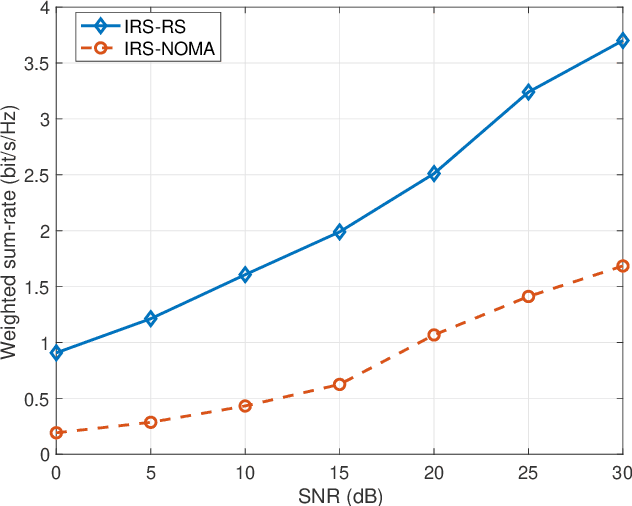
Abstract:Integrating intelligent reflecting surface (IRS) and Rate-Splitting Multiple Access (RSMA) is an effective solution to improve the spectral/energy efficiency in next-generation (beyond 5G (B5G) and 6G) wireless networks. In this paper, we investigate a rate-splitting (RS)-based transmission technique for an IRS-aided communication network involving both near and cell-edge users. In particular, we derive a new architecture called IRS-RS that leverages the interplay between RS and IRS, with an aim to maximize the weighted sum-rate (WSR) of users by selecting the reflecting coefficients at the IRS and designing beamformers at the BS under the constraints of power at the base station (BS), quality of service (QoS) at each user and finite resolution at the IRS. To solve the non-convex WSR maximization problem, we propose an alternating algorithm and compare its performance with baseline non-orthogonal multiple access (NOMA) based transmission for an IRS-aided communication network for both perfect and imperfect CSIT cases. Through numerical results, it is shown that the proposed IRS-RS architecture yields better QoS with respect to the cell-edge users when compared to IRS-NOMA transmission scheme.
Multiple Antenna Selection and Successive Signal Detection for SM-based IRS-aided Communication
Apr 28, 2021
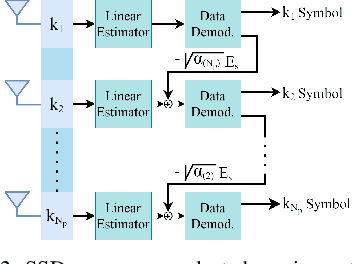


Abstract:Intelligent reflecting surface (IRS) is being considered as a prospective candidate for next-generation wireless communication due to its ability to significantly improve coverage and spectral efficiency by controlling the propagation environment. One of the ways IRS increases spectral efficiency is by adjusting phase shifts to perform passive beamforming. In this letter, we integrate the concept of IRS-aided communication to the domain of multi-direction beamforming, whereby multiple receive antennas are selected to convey more information bits than existing spatial modulation (SM) techniques at any specific time. To complement this system, we also propose a successive signal detection (SSD) technique at the receiver. Numerical results show that the proposed design is able to improve the average successful bits transmitted (ASBT) by the system, which outperforms other state-of-the-art methods proposed in the literature.
A Comparative Study on Collecting High-Quality Implicit Reasonings at a Large-scale
Apr 16, 2021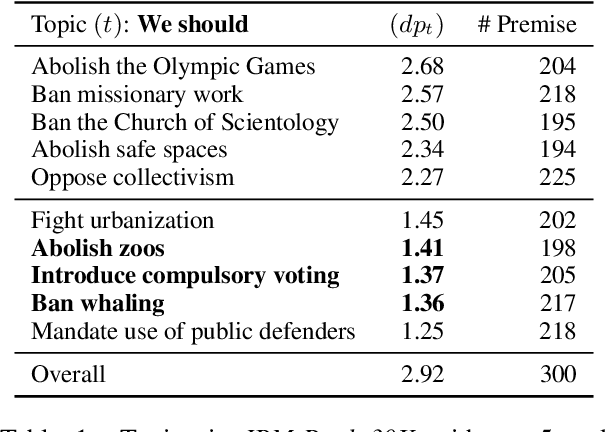
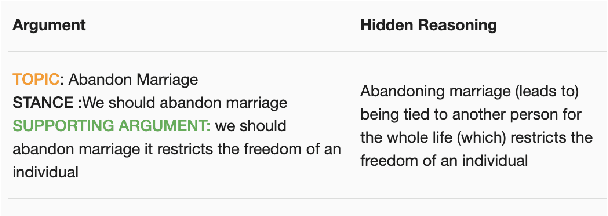

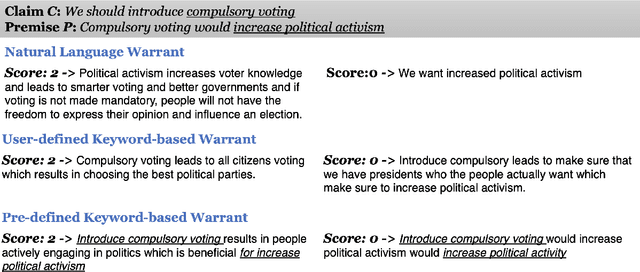
Abstract:Explicating implicit reasoning (i.e. warrants) in arguments is a long-standing challenge for natural language understanding systems. While recent approaches have focused on explicating warrants via crowdsourcing or expert annotations, the quality of warrants has been questionable due to the extreme complexity and subjectivity of the task. In this paper, we tackle the complex task of warrant explication and devise various methodologies for collecting warrants. We conduct an extensive study with trained experts to evaluate the resulting warrants of each methodology and find that our methodologies allow for high-quality warrants to be collected. We construct a preliminary dataset of 6,000 warrants annotated over 600 arguments for 3 debatable topics. To facilitate research in related downstream tasks, we release our guidelines and preliminary dataset.
When Choosing Plausible Alternatives, Clever Hans can be Clever
Nov 01, 2019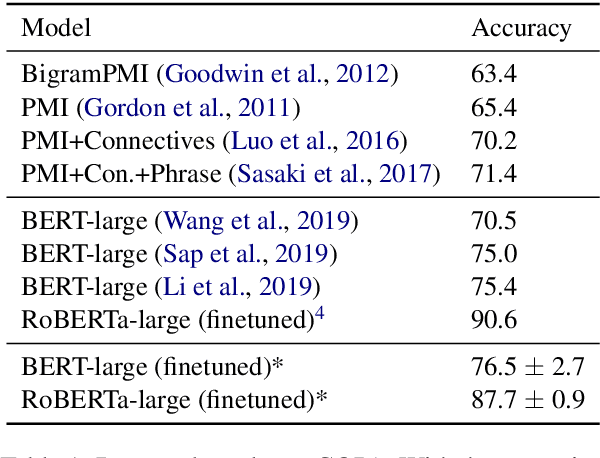
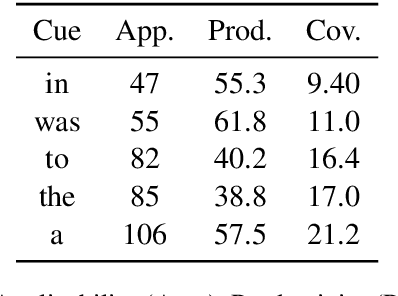
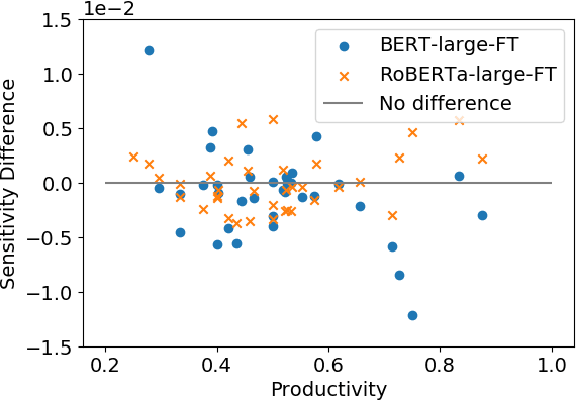

Abstract:Pretrained language models, such as BERT and RoBERTa, have shown large improvements in the commonsense reasoning benchmark COPA. However, recent work found that many improvements in benchmarks of natural language understanding are not due to models learning the task, but due to their increasing ability to exploit superficial cues, such as tokens that occur more often in the correct answer than the wrong one. Are BERT's and RoBERTa's good performance on COPA also caused by this? We find superficial cues in COPA, as well as evidence that BERT exploits these cues. To remedy this problem, we introduce Balanced COPA, an extension of COPA that does not suffer from easy-to-exploit single token cues. We analyze BERT's and RoBERTa's performance on original and Balanced COPA, finding that BERT relies on superficial cues when they are present, but still achieves comparable performance once they are made ineffective, suggesting that BERT learns the task to a certain degree when forced to. In contrast, RoBERTa does not appear to rely on superficial cues.
 Add to Chrome
Add to Chrome Add to Firefox
Add to Firefox Add to Edge
Add to Edge